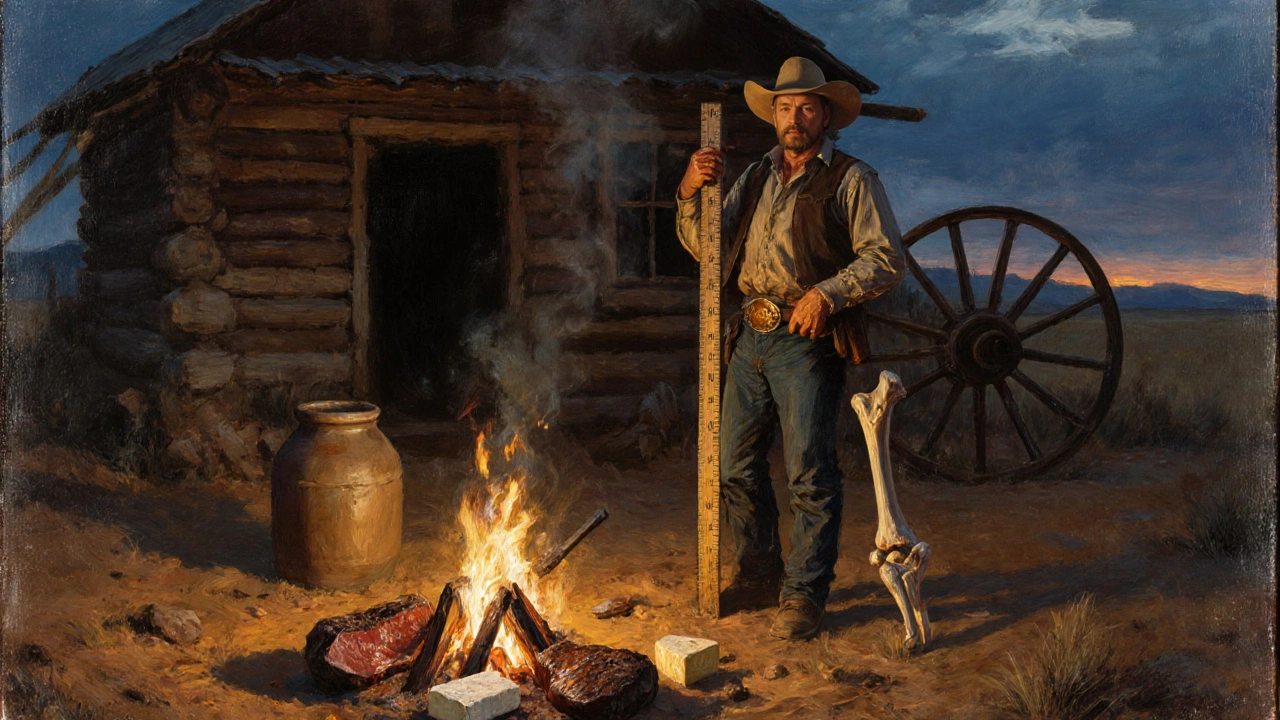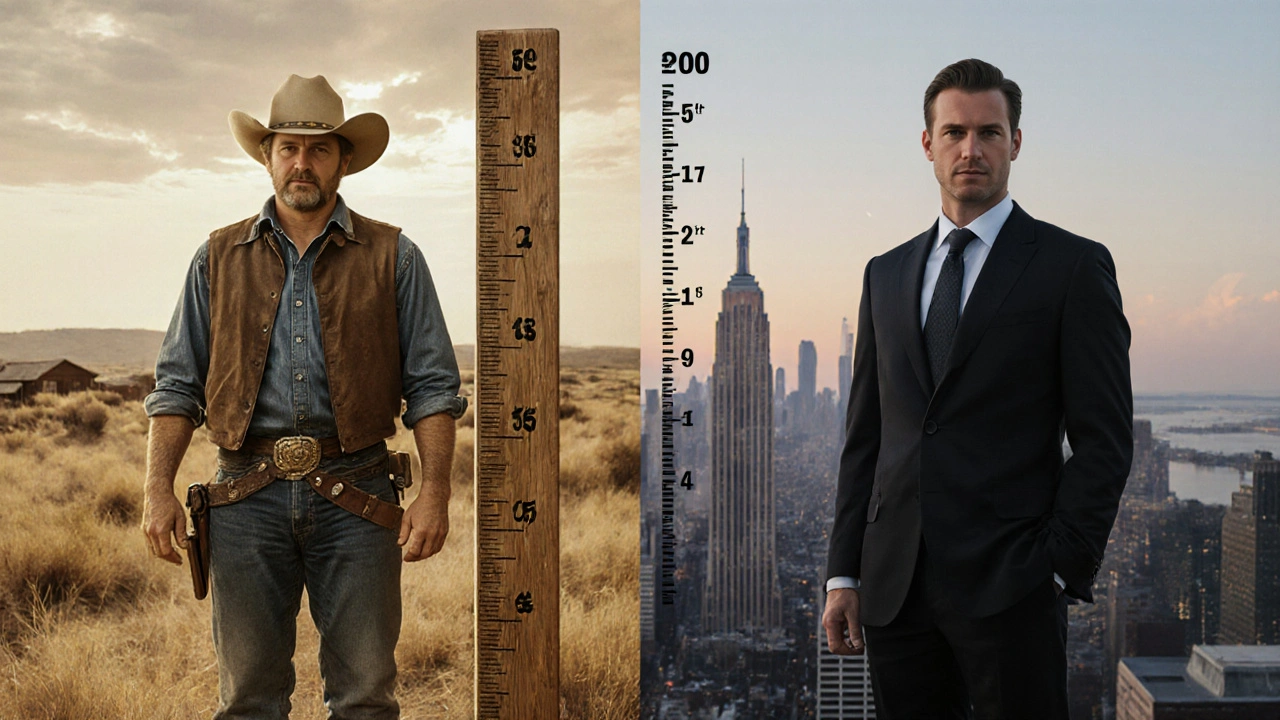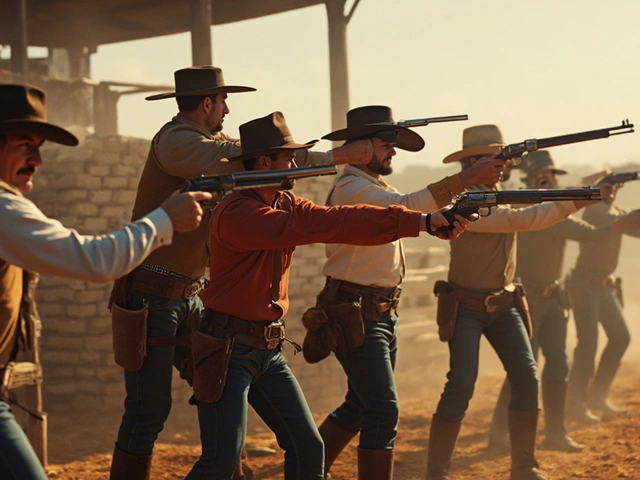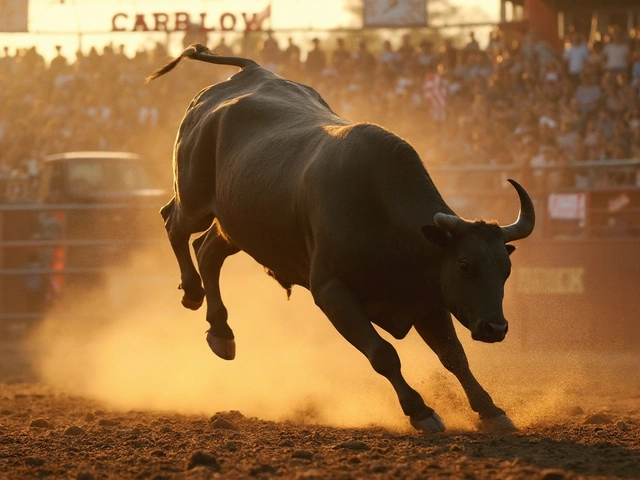Ever wondered if the cowboys you see in old movies were towering giants or more modest in size? The answer lies in data gathered from army records, cemetery skeletons, and early health surveys. Below we break down the best estimates for average male height 1800, explain why men were generally shorter than today, and show how the Wild West fits into the bigger picture.
Quick Takeaways
- In the United States around 1800 the average adult male stood about 5ft7in (170cm).
- European men were slightly shorter, ranging from 5ft5in to 5ft6in.
- Nutrition, disease burden, and early industrialization were the main drivers of stature.
- Today’s U.S. men average roughly 5ft9½in (177cm), a gain of about 2inches over two centuries.
- Regional variation persisted - frontier settlers often matched the national average despite harsh living conditions.
Defining the Central Figure
Average male height in 1800 is the mean stature of adult men documented around the turn of the 19th century. Researchers estimate it using military enlistment forms, church baptism records, and skeletal measurements, each offering a glimpse into the physical reality of the era.
Sources That Reveal Height
Three main data streams provide the backbone for our numbers:
- U.S. military records recorded recruits' height in inches from the late 1700s onward. These are considered reliable because soldiers were measured at enlistment.
- Cemetery skeletal remains allow anthropologists to reconstruct stature from long bone lengths. Studies in New York, Philadelphia, and frontier towns have produced consistent results.
- Parish and civil registries provided height entries for births and marriages in Europe. Though less systematic, they complement the American data.

Numbers by Region
| Region | Average Height | Primary Source |
|---|---|---|
| United States (frontier) | 5ft7in (170cm) | U.S. Army enlistment data (1792‑1815) |
| United Kingdom | 5ft5in (165cm) | British military records (1800‑1810) |
| France | 5ft5in (165cm) | Parisian cemetery osteology (1790‑1805) |
| Germany (Prussia) | 5ft5in (165cm) | Prussian conscript rolls (1800‑1810) |
| Sweden | 5ft6in (168cm) | Parish birth records (1790‑1800) |
Why Were Men Shorter?
Three interlocking factors kept stature down:
- Nutrition Calories, protein, and micronutrients were less abundant, especially for lower‑income families. Diets relied heavily on bread, salted meat, and seasonal vegetables.
- Disease burden Frequent bouts of malaria, tuberculosis, and childhood infections hampered growth. Children who survived often did so at the cost of delayed skeletal development.
- Industrial revolution Early factories introduced crowded living conditions and poor sanitation, especially in urban centers. Rural frontier settlers sometimes escaped these stresses, which is why their heights match the national average.
Frontier Life and Height
The Wild West image conjures rugged cowboys, miners, and homesteaders. Despite hard physical labor, their average height mirrors the broader U.S. data (about 5ft7in). Why? Two reasons:
- Most men who headed West were already adults, and the growth plates had closed - they couldn’t gain height after leaving their hometowns.
- Frontier diets, though simple, often included higher protein from game and dairy, partially offsetting the nutritional deficits seen in crowded Eastern cities.

How Height Changed Over Time
By the early 20th century, average American male height climbed to about 5ft8in, and by 2020 it sits near 5ft9½in (177cm). The rise is linked to:
- Improved public health measures (clean water, vaccines).
- Higher caloric intake and more diverse diets.
- Reduced child mortality, allowing more children to reach full growth potential.
While the numbers seem modest, a two‑inch gain over 220years represents a significant biological shift driven by socioeconomic progress.
Practical Checklist: Estimating Historical Stature
- Start with reliable primary sources (military enlistments, burial osteology).
- Cross‑check regional data - avoid assuming one nation's average applies worldwide.
- Adjust for socioeconomic status; elite classes tended to be taller.
- Consider age cohorts - teenagers were often recorded as “adult” height in some registries.
- Account for measurement inconsistencies (imperial vs metric, wearing shoes, rounding).
Frequently Asked Questions
What was the average height of a cowboy in the 1800s?
Cowboys were generally the same height as the overall U.S. male population - about 5ft7in (170cm). Their diet of meat and dairy helped them stay on par with city dwellers, despite harsher living conditions.
Did height differ between soldiers and civilians?
Military records tended to show slightly taller averages because recruitment standards often screened out very short individuals. Civilian averages, especially among the poor, were a few centimeters lower.
How reliable are cemetery skeleton studies?
Osteological methods are well‑established. By measuring the femur and applying regression formulas, researchers can estimate stature within ±2cm. However, preservation bias can skew samples toward certain socioeconomic groups.
Why were Europeans shorter than Americans?
Europe faced denser urban populations and earlier industrial pollution, which limited nutrition and increased disease. Immigrants to the U.S. often arrived with better health and access to more land‑based foods, nudging the American average upward.
How does today’s average height compare to 1800?
Modern U.S. men average about 5ft9½in (177cm), roughly 2inches taller than their counterparts in 1800. The increase reflects better nutrition, healthcare, and overall living standards.
So the next time you picture a towering gunslinger, remember that most of them stood right around the same height as the guy next to you - a little under six feet, shaped by the food on their plates and the world they lived in.







Jason Townsend
October 14, 2025 AT 19:06